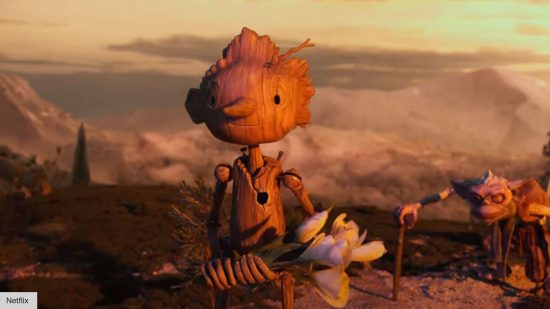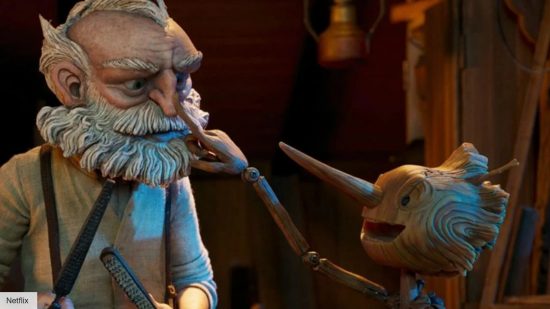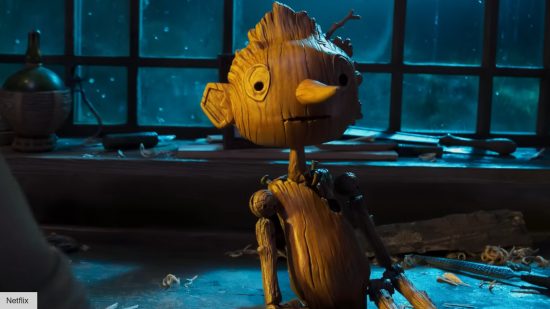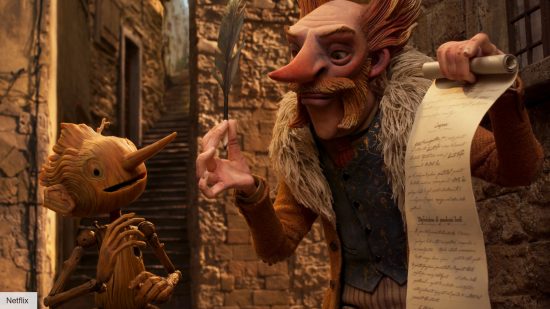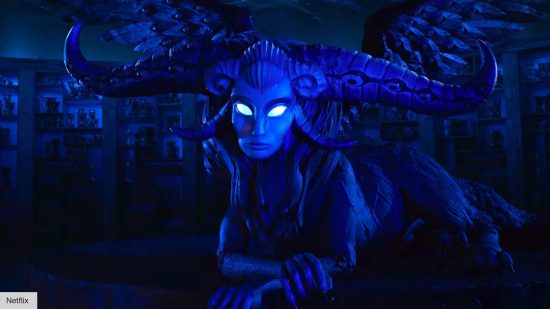When it comes to the art of stop-motion, the true magic behind these animated movies are the detailed puppets that bring fantastical stories to life. In the case of Guillermo Del Toro’s newest fantasy movie – a retelling of Carlo Collodi’s 1883 novel The Adventures of Pinocchio. – a central figure behind the on-screen magic is none other than Head of Puppets Georgina Hayns.
Guillermo Del Toro’s Pinocchio movie is the third Pinocchio (also the best) to come out in 2022. Disney recently released a live-action remake of its original animated movie, and Lionsgate flooded the internet with memes following its film Pinocchio: A True Story. However, despite an influx of wooden puppets, Guillermo’s vision stands out as a unique telling of the classic fairy tale. Its designs are strikingly dark, and the story is set in Mussolini era-Italy – everything feels textured, threatening yet, whimsical at the same time.
We sat down to talk with Georgina Hayns – Head of Puppets for the flick – whose previous credits include the likes of Coraline and The Corpse Bride, about the production of Pinocchio, learning about Guillermo’s unique approach to animation. From a worldwide puppet-making effort to the incorporation of mechanical puppet faces, The Digital Fix has the inside scope on the impressive family movie.
The Digital Fix: This is the third Pinocchio movie to come out this year. But all the Pinocchios, be it the Disney one, the Lionsgate one, or Guillermo’s, look really different from one another. What inspired your design for your version of the character?
Georgina Hayns: A lot of it mainly came from Guillermo and his vision of Pinocchio in the story. His vision of Pinocchio, as opposed to the Disney version and the version of the original story where it’s all about obedience of the character and basically trying to conform this wooden boy into a real boy, Guillermo’s vision of Pinocchio was the disobedience. And at the end, it’s not about him trying to become a real boy. It’s about him finding himself and staying a wooden boy.
Guillermo’s vision for the movie is more inspired by Frankenstein than it is the original book. And it’s very much the story of a father and son relationship. So, that is reoccurring in the film. We knew that this was a wooden body; it was never going to be dressed up. We really embrace the fact that it was a carved wooden boy carved by Geppetto. So, part of it is beautifully finished, and the other parts of him have rough-hewn edges, because, you know, he’s real.

So we had all of this description when we started to build the puppet. And we also had a very good design that Guillermo was really happy with. So, it was then about embracing the fact he was wood. We asked the questions: ‘how do we represent wood in this movie?’ And then the wood that we came up with in the sculpt of Pinocchio, went on to be the reference for the look of wood throughout the whole movie. It was a slightly stylized wood.
Everything in the movie became perfectly imperfect. Nothing was quite perfect, just like it would be in the real world. It has an essence of that when you look at it from afar; we reference lots of different images of wood, real wood. We found references in the forest, bought them in, and then made our own interpretation scratch model tests of these different woods.
We reviewed those with Guillermo to the point that he picked out certain things he liked. And then the maquette from the illustration with this reference was then sort of put together. And once Guillermo was happy with the mark-making of the wood on the maquette, then it was just the case of actually sort of building that, putting colour into it, and turning it into a puppet.
TDF: I heard that your puppets had mechanical faces. Is that correct?
GH: Yeah, the majority, except for Pinocchio. So yes. All of the human characters have mechanical faces and this was a decision that Guillermo made in the really early days of the film. I was in a meeting with Mackinnon and Saunders [a UK puppet-maker firm which worked on Tim Burton’s Corpse Bride] who were making the six hero puppets for Pinocchio.
There was myself because I was heading up a team in Portland where we were filming it and making secondary puppets, creatures, etc. And it was sort of one of those brain trust meetings. Guillermo really wanted mechanical faces because he felt that mechanical faces give more opportunity for the animators to come through as real actors through the faces of the puppets.
Because with replacement faces, it is all done nowadays on a computer. They are typically printed out, and they can have that uncanny valley look to them. At times you question some of the latest stop-motion films and the performances because of that. It’s like ‘wow. is this a CG face?’
Guillermo didn’t want that; he wanted the imperfections that happened with the silicone skins, you know, as you’re animating it, because that’s part of human nature: imperfection. But he also really wanted to give the animators as much scope to act through the puppets.
He really sees this film as not animation – it’s live action, but with puppets. Which is quite interesting because I’ve never worked with a director who saw it that way. And there was certain rules with the animators that made it much more performance-based than some of the other projects I’ve worked on.
TDF: You mentioned your past work. Previously you’ve worked with the likes of Tim Burton on Corpse Bride, and Henry Selick on Coraline, and now this re-imagining of Pinocchio. What keeps drawing you back to dark fantasy?
GH: (laughs) I think being in the world of stop motion. It’s a very good medium to tell dark stories. The last film that I worked on before, Pinocchio, was a movie called Missing Link, which was, you know, my last stop-motion feature. And that was the absolute opposite to the projects you mentioned.
It was brightly coloured, sort of very much computer-looking in a way. So stop motion can tell, lighter, brighter stories. But I think, for some reason, it seems to be a sort of a technique that certain filmmakers are drawn to.
Tim Burton is one of them. One of them was Henry Selick. And one of them was Guillermo del Toro, you know, the three that you just mentioned. And they have a really interesting look on the world. And they’re not afraid to tell unconventional stories.
And I think that with stop motion, you can go quite fantastical in a three-dimensional world. So I think that’s the thing. There is so much trickery that you can do with stop motion. You can create these creatures and still make it feel like it is in a real world.
You know, computers can do all the same things now, but you always know it’s a computer. So it just hasn’t got to that place where you can feel the textures, you can see the mistakes, you can see that thing of a human being is interesting because of the asymmetry in their faces. And you know, ‘the limp that I’ve got, because I broke my toe’.
When you put stories into a computer, it strips all of that away. So, I think that’s why stop motion is good for this kind of storytelling, but it doesn’t prevent it from being used in other stuff besides dark fantasy too.
TDF: How many puppets do you think you made during the course of this movie?
GH: Oh, yeah, so it’s about 200. Yeah, it was a lot! So we have Mackinnon and Saunders in England, making the six hero puppets. And then in Portland, we probably made about 150 puppets. So we were doing all of the world that you see in the film. You know, the townspeople, and then the secondary characters that have lines and, what you haven’t seen if you’ve still got to watch the movie, is some amazing fantastical Guillermo creatures in Pinocchio.
So we were tasked with making all of those as well. There was a team that worked on one sequence in the movie, and they weren’t in the UK or Portland because part of it was an educational sort of start-up in Guadalajara, an educational facility for stop motion. They also made the puppets there; they made the sets there. So they made, I think, around about 12 puppets there. So it was a real cross-continent puppet mill [laughs].
TDF: Yeah! Sounds like quite an international affair.
GH: Oh, god yeah! Which was interesting because we knew it was going to be like that from the onset. So we had a lot of systems set up in place so that we could review all of the puppets step by step, you know, from MacKinnon’s. It was all reviewed digitally. It was photographed. And we had no idea that a global pandemic was going to hit and that all of this was going to be the foundation of how we were going to make this movie. So it was quite fortuitous, in a way.
TDF: Final question. Did you have a favourite puppet while making this movie? I mean, you have been working on it for years, there must be a puppet you feel an affinity with?
GH: It’s an interesting one because there are many, for all different reasons. I have different favourites. I think I was particularly a big fan of one of the creatures that you haven’t seen yet, it gets introduced later in the movie, and I don’t want to spoil anything. It has wings and all different sorts of textures and materials, and it was just such a Guillermo creature, and it was a joy to make. So that’s probably what my favourite is, but I can’t really name it. (laughs) You will know it when you see it.
Pinocchio hits the streaming service Netflix on December 9.
